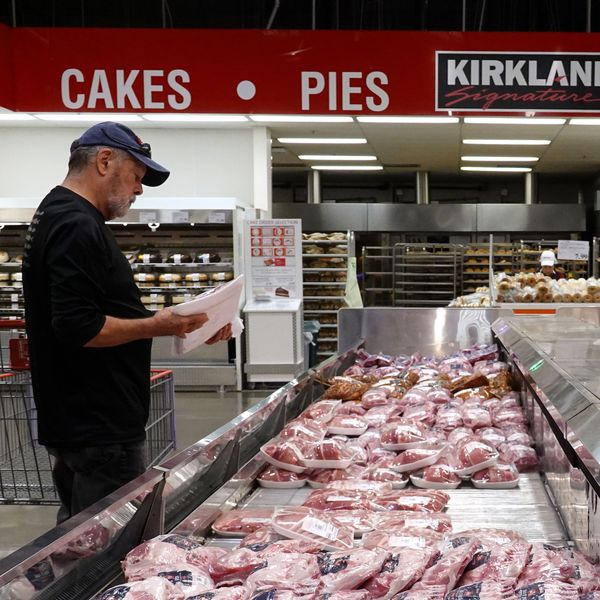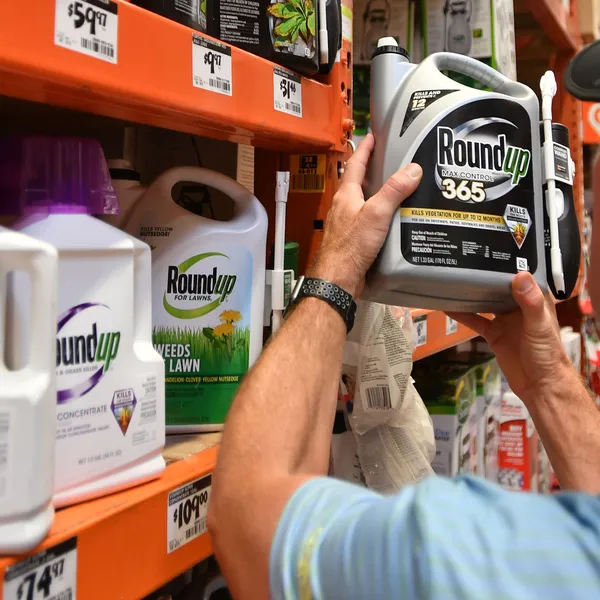The FDA and Fukushima Fallout
Recently, a senior scientist with the Food and Drug Administration (FDA) made this comment to the news media about radioactive fallout being detected in milk in the United States from the nuclear catastrophe in Japan:
"Radiation is all around us in our daily lives, and these findings are a miniscule amount compared Fukushima-Daiichi to what people experience every day. For example, a person would be exposed to low levels of radiation on a round trip cross country flight, watching television, and even from construction materials."
Recently, a senior scientist with the Food and Drug Administration (FDA) made this comment to the news media about radioactive fallout being detected in milk in the United States from the nuclear catastrophe in Japan:
"Radiation is all around us in our daily lives, and these findings are a miniscule amount compared Fukushima-Daiichi to what people experience every day. For example, a person would be exposed to low levels of radiation on a round trip cross country flight, watching television, and even from construction materials."
No matter how small the dose might be, it is disingenuous to compare an exposure to a specific radioisotope that is released by a major nuclear accident, with radiation exposures in everyday life. The FDA spokesperson should have informed the public that radioiodine provides a unique form of exposure in that it concentrates rapidly in dairy products and in the human thyroid. The dose received, based on official measurements, may be quite small, and pose an equally small risk. However, making a conclusion on the basis of one measurement is fragmentary at best and unscientific at worst. As the accident in Fukushima continues to unfold, the public should be provided with all measurements made of radioactive fallout from the Fukushima reactors to allow for independent analyses.
Moreover, the FDA has been asleep at the switch when it comes to protecting public health from medical radiation exposures. According to the National Council on Radiation Protection, radiation exposures to the American public from medical devices and source, which FDA regulates, have soared by nearly 600 percent since 1982. In 2002, the NCRP estimated that the public received an extra 53 millirem (0.53 mSv) per person per year from medical radiation sources. In 2006, the NCRP estimates that this dose has jumped to 300 millirem (3mSv) -- nearly three times the annual dose allowed by the U.S. EPA from nuclear facilities.
The single largest contributor responsible for half of this dose to the American public is from Computed Tomography or CT Scans, whose use has skyrocketed over the past several years. According to a study in the Archives of Internal Medicine, as many as 29,000 future cancers could be related to CT scans performed in 2007 alone. According to several recent articles in the New York Times, an alarming number of people have been severely overexposed to CT scans. FDA has yet to comment on how this may be affecting the health of the Americans in everyday life.
An Urgent Message From Our Co-Founder
Dear Common Dreams reader, The U.S. is on a fast track to authoritarianism like nothing I've ever seen. Meanwhile, corporate news outlets are utterly capitulating to Trump, twisting their coverage to avoid drawing his ire while lining up to stuff cash in his pockets. That's why I believe that Common Dreams is doing the best and most consequential reporting that we've ever done. Our small but mighty team is a progressive reporting powerhouse, covering the news every day that the corporate media never will. Our mission has always been simple: To inform. To inspire. And to ignite change for the common good. Now here's the key piece that I want all our readers to understand: None of this would be possible without your financial support. That's not just some fundraising cliche. It's the absolute and literal truth. We don't accept corporate advertising and never will. We don't have a paywall because we don't think people should be blocked from critical news based on their ability to pay. Everything we do is funded by the donations of readers like you. Will you donate now to help power the nonprofit, independent reporting of Common Dreams? Thank you for being a vital member of our community. Together, we can keep independent journalism alive when it’s needed most. - Craig Brown, Co-founder |
Recently, a senior scientist with the Food and Drug Administration (FDA) made this comment to the news media about radioactive fallout being detected in milk in the United States from the nuclear catastrophe in Japan:
"Radiation is all around us in our daily lives, and these findings are a miniscule amount compared Fukushima-Daiichi to what people experience every day. For example, a person would be exposed to low levels of radiation on a round trip cross country flight, watching television, and even from construction materials."
No matter how small the dose might be, it is disingenuous to compare an exposure to a specific radioisotope that is released by a major nuclear accident, with radiation exposures in everyday life. The FDA spokesperson should have informed the public that radioiodine provides a unique form of exposure in that it concentrates rapidly in dairy products and in the human thyroid. The dose received, based on official measurements, may be quite small, and pose an equally small risk. However, making a conclusion on the basis of one measurement is fragmentary at best and unscientific at worst. As the accident in Fukushima continues to unfold, the public should be provided with all measurements made of radioactive fallout from the Fukushima reactors to allow for independent analyses.
Moreover, the FDA has been asleep at the switch when it comes to protecting public health from medical radiation exposures. According to the National Council on Radiation Protection, radiation exposures to the American public from medical devices and source, which FDA regulates, have soared by nearly 600 percent since 1982. In 2002, the NCRP estimated that the public received an extra 53 millirem (0.53 mSv) per person per year from medical radiation sources. In 2006, the NCRP estimates that this dose has jumped to 300 millirem (3mSv) -- nearly three times the annual dose allowed by the U.S. EPA from nuclear facilities.
The single largest contributor responsible for half of this dose to the American public is from Computed Tomography or CT Scans, whose use has skyrocketed over the past several years. According to a study in the Archives of Internal Medicine, as many as 29,000 future cancers could be related to CT scans performed in 2007 alone. According to several recent articles in the New York Times, an alarming number of people have been severely overexposed to CT scans. FDA has yet to comment on how this may be affecting the health of the Americans in everyday life.
Recently, a senior scientist with the Food and Drug Administration (FDA) made this comment to the news media about radioactive fallout being detected in milk in the United States from the nuclear catastrophe in Japan:
"Radiation is all around us in our daily lives, and these findings are a miniscule amount compared Fukushima-Daiichi to what people experience every day. For example, a person would be exposed to low levels of radiation on a round trip cross country flight, watching television, and even from construction materials."
No matter how small the dose might be, it is disingenuous to compare an exposure to a specific radioisotope that is released by a major nuclear accident, with radiation exposures in everyday life. The FDA spokesperson should have informed the public that radioiodine provides a unique form of exposure in that it concentrates rapidly in dairy products and in the human thyroid. The dose received, based on official measurements, may be quite small, and pose an equally small risk. However, making a conclusion on the basis of one measurement is fragmentary at best and unscientific at worst. As the accident in Fukushima continues to unfold, the public should be provided with all measurements made of radioactive fallout from the Fukushima reactors to allow for independent analyses.
Moreover, the FDA has been asleep at the switch when it comes to protecting public health from medical radiation exposures. According to the National Council on Radiation Protection, radiation exposures to the American public from medical devices and source, which FDA regulates, have soared by nearly 600 percent since 1982. In 2002, the NCRP estimated that the public received an extra 53 millirem (0.53 mSv) per person per year from medical radiation sources. In 2006, the NCRP estimates that this dose has jumped to 300 millirem (3mSv) -- nearly three times the annual dose allowed by the U.S. EPA from nuclear facilities.
The single largest contributor responsible for half of this dose to the American public is from Computed Tomography or CT Scans, whose use has skyrocketed over the past several years. According to a study in the Archives of Internal Medicine, as many as 29,000 future cancers could be related to CT scans performed in 2007 alone. According to several recent articles in the New York Times, an alarming number of people have been severely overexposed to CT scans. FDA has yet to comment on how this may be affecting the health of the Americans in everyday life.

